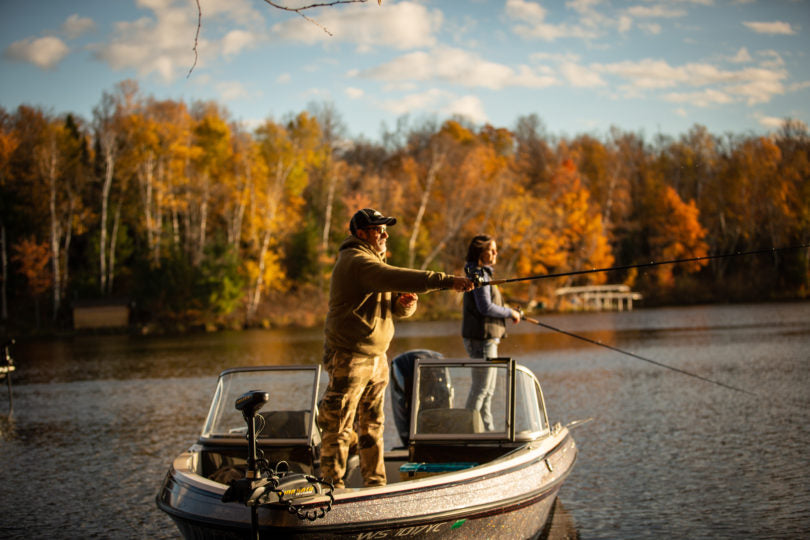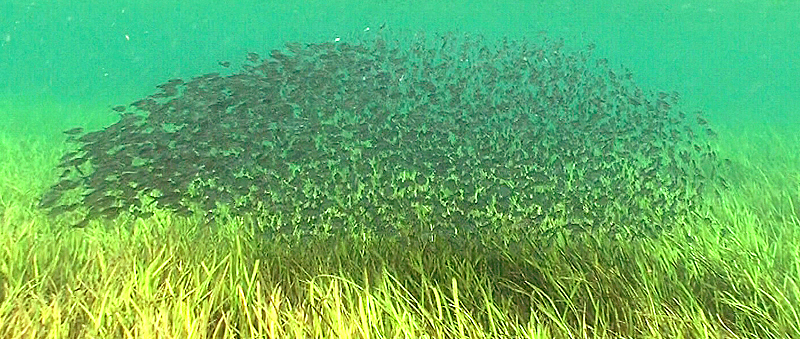The Fall Transition

As fall approaches, the cooling temperatures bring about significant changes in bass behavior. Understanding the seasonal transition and adapting your strategies can help you master fall bass fishing. This period can be broken down into three distinct stages, early fall, mid-fall, and late fall, each characterized by different fish patterns, feeding habits, and ideal lure choices.
In early fall, bass are still holding onto their summer patterns. During this time, water temperatures remain relatively warm, and fish can often be found in deeper waters or near their summer structures. However, as the first signs of cooler weather begin, bass will start to move toward shallower areas, following baitfish such as shad, bluegill, and minnows. A couple solid lures for early fall would be spinnerbaits and crankbaits, which allows you to cover a lot of water. Spinnerbaits mimic the movement of schooling baitfish, while crankbaits can be used to target bass holding in slightly deeper water. The focus should be on transitional areas like main lake points or creek channels where bass begin their migration toward shallow waters.
As the water temperatures continue to drop and daylight decreases, bass enter a phase of intense feeding in mid-fall. This is the prime time for bass fishing, as the fish become more aggressive, feeding heavily in preparation for the winter months. During this stage, bass can often be found in shallow waters, chasing schools of baitfish. Swimbaits, jerkbaits, and the Banjo Minnow become incredibly effective during mid-fall. Swimbaits with a bluegill or shad profile can be fished near vegetation, docks, or other shallow structures where bass are actively feeding. Jerkbaits, both hard and soft, allow for more erratic movement, imitating injured or fleeing baitfish and triggering reaction strikes from aggressive bass. A better option over a soft plastic jerkbait would be a Banjo Minnow. With action more life-like and a profile that’s more realistic, the Banjo has one up on a regular soft plastic jerkbait.
Late fall marks the final phase of the transition. As water temperatures continue to drop, bass become less active and move back to deeper waters. Their metabolism slows, and their feeding patterns become more sporadic. During this stage, it’s important to slow down your presentation and focus on deeper areas where bass have settled in for the colder months. For late fall fishing, jigs and crankbaits are highly effective. A bulky jig with a slow, dragging presentation can coax bites from lethargic bass, while a crankbait can imitate the movement of the last remaining baitfish in the water column. The bass start feeding heavily on craws and brim, and goby again and a big jig mimics that very well. Focus on using that crankbait as a search bait on deeper points, ledges, and drop-offs where bass are more likely to be holding as they transition to their wintering areas. A crankbait with a tighter wobble is the way to go in this scenario because of the cooler water.
Throughout fall, it’s crucial to adjust your strategy based on the stage of the season and the behavior of the bass. Early fall calls for covering water and locating fish, while mid-fall requires faster, more aggressive presentations to match the feeding frenzy. By late fall, patience and precision are key, as bass become more reluctant to chase fast-moving lures. Understanding these three stages, early, mid, and late fall, can significantly improve your bass fishing success during this transitional season. By using the right lures and techniques, you can follow these fish in and out of their stages as they transition through this complex period. In summary, fall bass fishing requires both versatility and timing, but with the right approach, this season can offer y’all with some of the most rewarding fishing experiences of the year.




